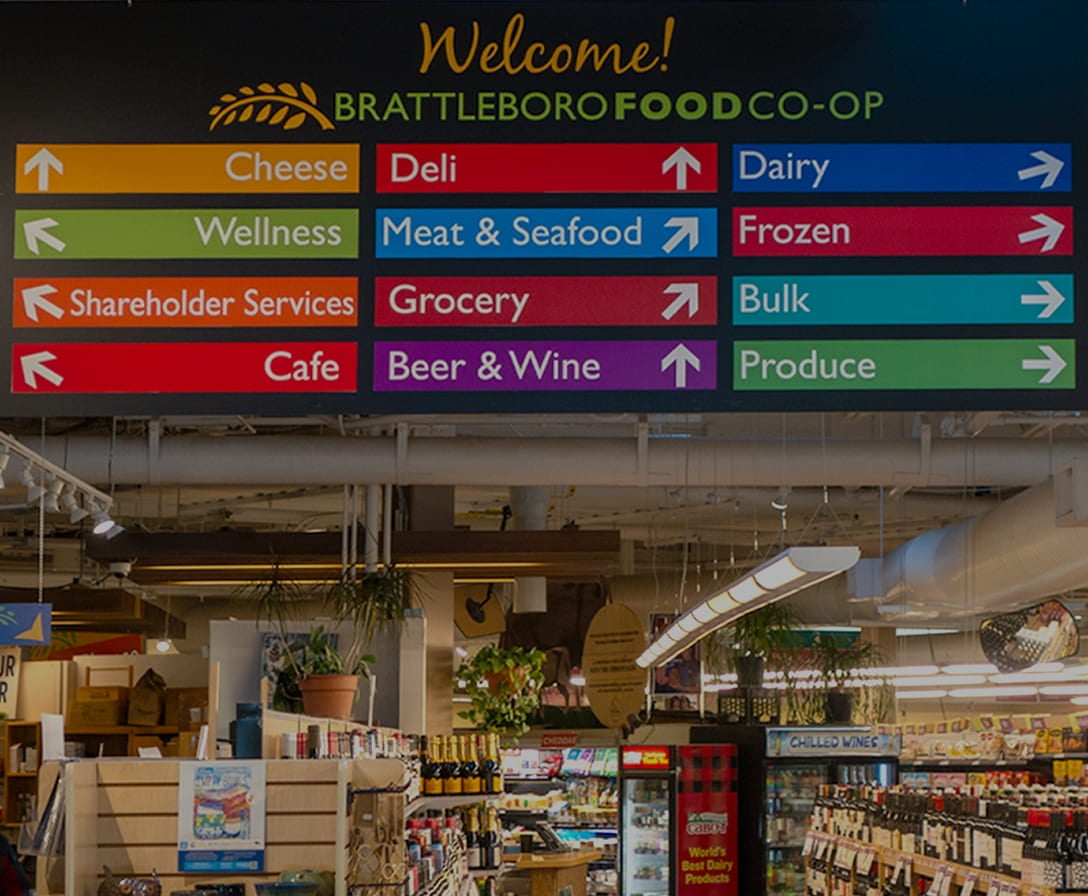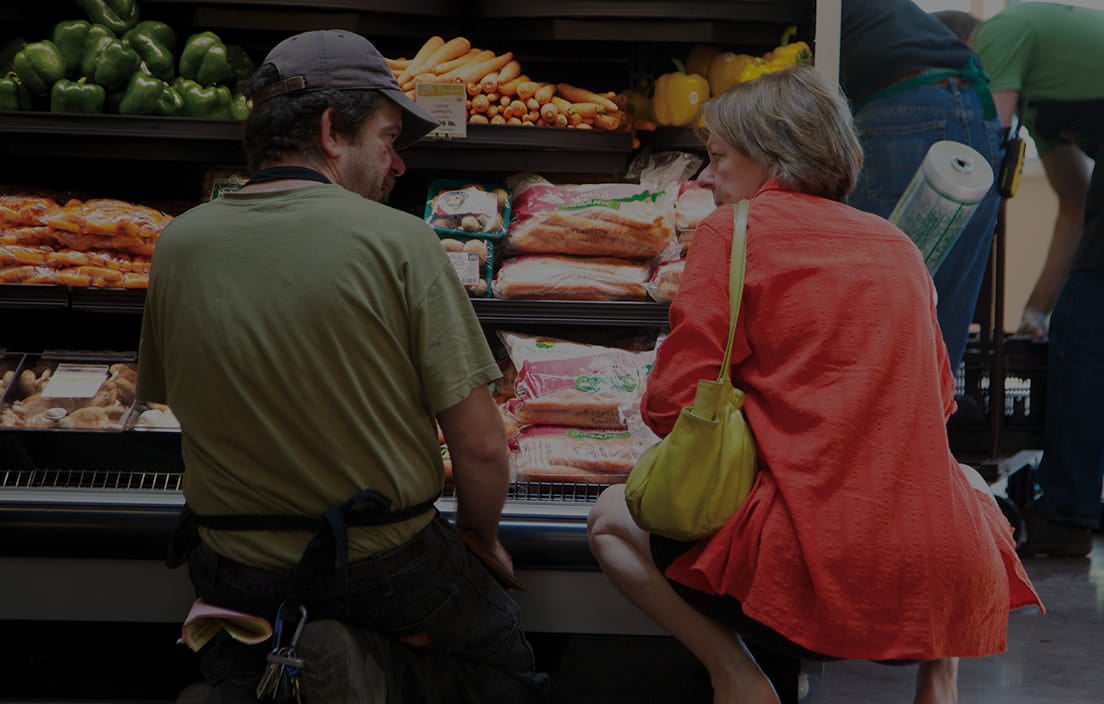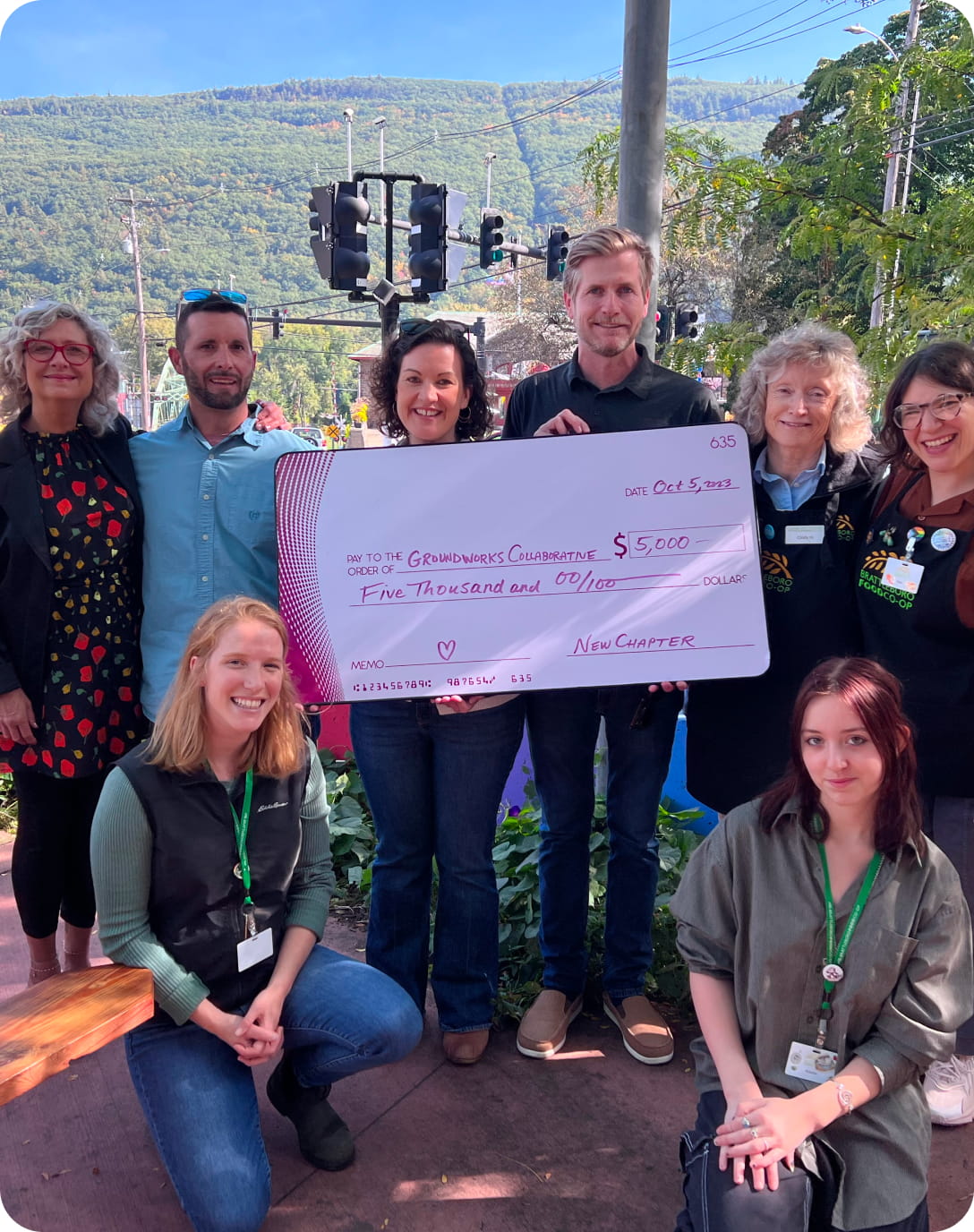Laughing Child Farm
A Whole Lot Of Sweet Potatoes— The biggest sweet potato producer in Vermont, Laughing Child Farm, is tucked away in the Butternut Bend neighborhood of Pawlet, VT. Brooke and Tim Hughes-Muse have raised their family and a whole lot of sweet potatoes over the past five years on 39 acres. In fact, they will grow 180,000 pounds of sweet potatoes on their land this year, all certified organic and mostly planted and harvested by hand. It is a labor of love for this family, with four kids, a few goats, a dog and an amazingvegetable garden. It all started just a few miles away in Poultney, Vermont where Tim and Brooke both received their undergraduate degrees in the early 2000’s at Green Mountain College. Green Mountain College is a small environment-focused school located in Poultney. Tim and Brooke each selected the school because it was one of the only schools in the country at that time that had such a strong focus on environmental studies, geology and stewardship of the land. This Vermont experience aligned well with Tim’s upbringing on a beef farm in Maryland. Brooke grew up in a small rural town and was extremely excited about “saving the world,” and when she visited Vermont and Green Mountain College she knew it was the place. They met and fell in love there and were married soon after they graduated. While studying, Tim had a job walking and mapping the region around Poultney, and as he executed his work he was able to witness the impact of farming on the landscape: he noticed that in many ways it was deteriorating the land. Once he graduated and took on farming as his life’s work, he took a deeply impassioned approach, where the stewardship of the land was of the utmost importance.
Laughing Child Farm has been in existence since 2007 when they sold chicken, eggs, and vegetables at farmers markets while they lived with their kids in yurts. When they were toying with what they should call the farm they could hear their girls giggling as they were playing and snacking in the garden. Laughing Child Farm seemed exactly perfect to capture their love of family and farming. After a few years of selling food at farmers markets in Vermont, they moved to Hudson Valley, NY to take a job farming. After a bit of time the owner of the farm in Hudson Valley purchased the property where Brooke and Tim currently live and farm in Pawlet. The family moved back to Vermont and for a while Tim managed both the Pawlet farm and the Hudson Valley farm, commuting back and forth. Then, in 2014, Brooke and Tim purchased the 39 acres of land and started to focus and increase production of their sweet potato crop. Since owning their land they have dug into the soil to determine its nutrient profile and complexities. From the soil testing they determined it was very fertile soil for sweet potatoes. In addition to the nutrient profile it is dry and well drained, which is particularly great for potatoes. Tim actually called it the “banana belt” of sweet potatoes in Vermont. While it doesn’t have the warm and perfect conditions in North Carolina, this region of New England is in a sweet spot and they knew is would allow for an outstanding crop. Furthermore, sweet potatoes are relatively easy to grow and do not require spraying which means they can be easily grown in organic fashion. Additionally, a single crop allows for continued efficiencies—and it didn’t hurt that there was little competition. Lastly, sweet potatoes are a nutritional power house and they love eating them every day!
Why organic? Organic farming is something they have always done and, as Tim stated, they farm their fields as they would their home garden. This also made it an easy decision to grow sweet potatoes because they do not have many pests and can be easily grown in an organic manner. No spray. No pesticides. Just organically approved soil inputs, such as fish emulsion. It’s also great for anyone planting, weeding or harvesting because they can actually work without worrying about chemicals irritating their skin or affecting their health. Because of the organic practices even Tim and Brooke’s kids can help out around the farm without any concerns.
Planting and Harvesting— The first big lesson in sweet potato farming Tim shared is that this crop is not resistant to frost, which dictates when they can plant. With frost still possible in May, Tim always waits until the first week in June to plant vines or “slips” (as Tim called them) in the ground. They focus on four varieties of sweet potatoes: Convington’s (the largest crop), Beauregard, Carolina Rubies, and Murasaki. When the first week in June hits, Tim takes the 24 hour round trip drive down and back to North Carolina to buy his organic “slips” for planting. Upon arriving back at 6am his team is ready to go and they immediately start planting. The first ten days are pivotal to the success of a sweet potato crop as the health of roots play the major role. So Tim, Brooke and their team are constantly weeding and enter a stretch of 14 hour days to ensure proper root health. Once the roots are firmly in the soil he mainly serves as a tractor operator and a weeding specialist. While they plant on 13 acres they also have 13 acres where they are growing cover crop, working on soil fertility, and digging rocks out of the beds. They love growing a single crop because the schedule is quite cyclical. While it is intense for many months of the season they then get some nice time off, particularly in August and the winter time. From May until July work happens around the clock, literally waking at 4:30 a.m. and, other than meal breaks, Tim, his team, and family are working until midnight on some occasions. The good news is once August hits, the work days are a bit shorter because most of the weeding is done, cover crop is growing and a few weeks remain until harvesting begins. In fact, sweet potatoes grow from 60-90 days depending on the variety. In August, the Hughes-Muse family can actually take some time to head to the Adirondacks to camp, fish and hike.
Harvesting begins in late August and ends around September 20th as all of the potatoes must be out of the ground before it gets too cold. If they let them stay in the ground past the equinox, the cold changes the culinary characteristics as well as shelf life. The harvesting process is even more intensive than the planting. The team must be in fit shape, during 12-14 hour harvesting days all of the work is done basically by hand. The big news with harvesting potatoes is that there is no true automated equipment or system. You must first mow down all the sweet potato greens, then remove them, loosen the soil and then dig up the potatoes by hand. It is back-breaking work and requires strength and stamina. It takes approximately 7 hours to harvest each row; in a day they can harvest a row and half if not two, with a crew of 8 people. All members of the planting and harvesting team obtain a minimum of $15 an hour. A fair wage is something that Tim strives for, especially since this work is intense. Once the potato has made it out of the ground the grading process starts. Grading means selecting those potatoes that have the proper shape, size, and color to sell. Being that the crop is certified organic they cannot control the size and shape as effectively as some farms that work under conventional practices. However, they are still able to harvest close to 180,000 pounds that meet their grade. Ensuring the skin is beautiful, no bug bites, and that they have the right weight is imperative. Tim helps to grade in field with his team, the kids even grade as they wash and pack but ultimately Brooke has the final say as her eye for grading is the best of the family. Many of the sweet potatoes grow to a “fancy” quality which means they are a perfect shape and weigh about 1/3 of a pound. The bigger potatoes are perfect when they are about the size of a can of beer. These beer-can sized potatoes are grade A. You will find both “Fancy” and “Grade A” sweet potatoes here at the Co-op! Once the graded potatoes make it to their new barn they must be cured. Curing is done to toughen the skin, seal them up, keeps them moist and help them be shelf-stable for sale and consumption throughout the winter. They store the potatoes in big wooden crates that are stacked in a 90-degree barn heated by a wood stove. While they are curing they are still alive and breathing in and out, still living once picked. In the winter time the potatoes respirate so much that they must work to cool their storage building so that it maintains at 55-degree temperature. Once the potatoes are harvested and cured the winter work begins which is washing, drying, packing a delivering. At this time they sell all of their potatoes in 8-9 months, with future plans to have a year-round supply. Laughing Child Farm distribute their potatoes directly in their own box truck. They focus mostly on sales to co-ops in New Hampshire, Vermont, Massachusetts, and the Hudson Valley of New York. They mentioned that co-ops are some of their favorite retailer relationships. At this time the Brattleboro Food Co-op is their largest customer based on volume of sweet potatoes sold. That being said they are seeking to expand their distribution to more co-ops in Massachusetts and New Hampshire. Brooke and Tim love sweet potatoes because they are one of the most nutrient-dense foods, and Tim considers them both a health food and a tasty snack. As he stated, “it just depends on how you fix them.” When sharing recipes, they talked of Shredded Sweet Potato Pancakes with eggs, beans and salsa! They also mentioned adding sweet potato to everything, including smoothies and waffles, in addition to always keeping a puree in their refrigerator. There are sweet potatoes in every single one of their meals and their kids love them, too! As Tim talked about growth, he said his first and foremost goal is to convince his neighbors to grow sweet potatoes in order to create a cooperative growing structure. He is willing to share all of his awesome sweet potato growing knowledge, and with optimal growing conditions in Butternut Bend, it would be a win-win for everyone. He would not need to grow additional potatoes on his land, just aid in the efficiencies and staffing. His ultimate goal is to hit two markers with his current business and the potential for the cooperative. One: Affordable and organic sweet potatoes; Two: Farmers and employees make a livable wage.
These are some of the best sweet potatoes you will ever eat. The balance of sweet and savory is delightful and with family holidays on the horizon make sure sweet potatoes make it onto your menu. Whether it be mashed, roasted, or a part of stuffing it will be crowd pleaser.
Need a recipe? Visit the recipe section of our website.
By Jon Megas-Russell
About Producer of The Month

Shop Online

On Sale Now!

